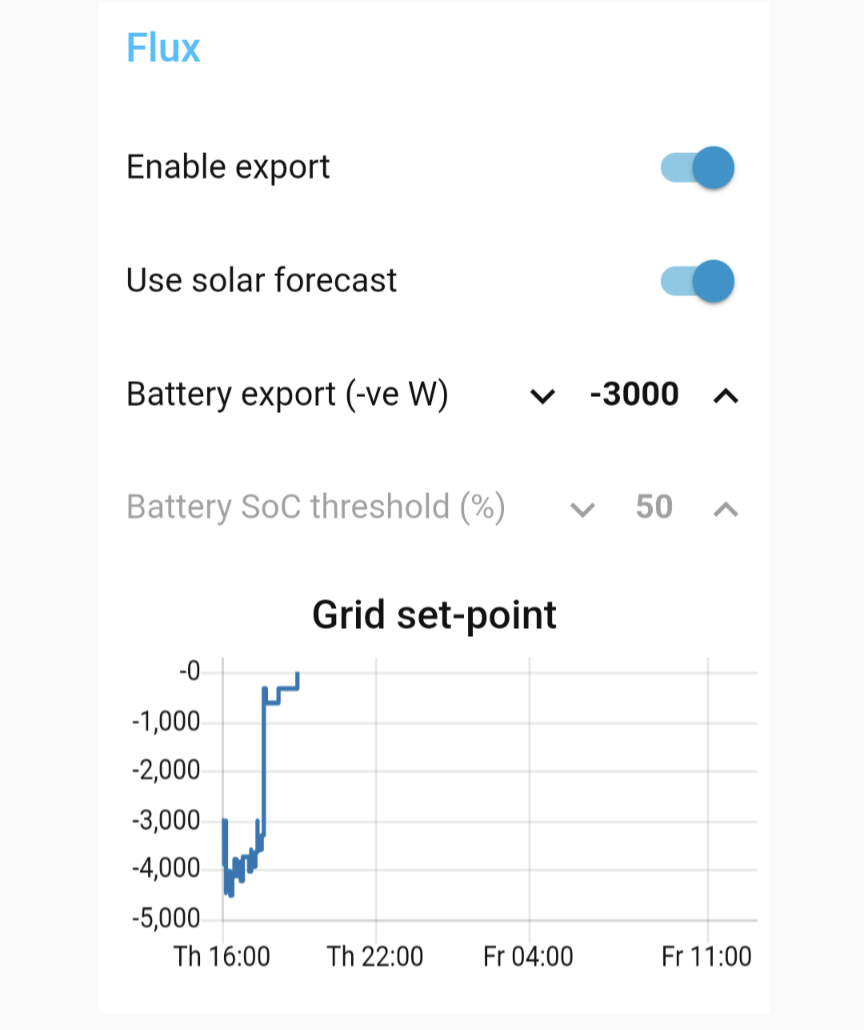Hi,
I have looked on the forum and as far as I can see have not found a 'Victron' based solution to schedule a discharge. The scheduled charging works great with firmware 3.0 so that you can use the correct timezones (GMT in my case).
The only piece that I can see that is missing is scheduled discharging.
I can programmatically force a discharge by setting the 'Grid Setpoint' to -5000 for the tme period that I need to force discharge my batteries, and checking that the 'State of Charge' does not go below a certain limit and that works fine.
A simple solution to this issue (as far as I can see) would be to include the 'Grid Setpoint' value within each 'Scheduled charge', and a low level 'State of Charge'. That way if the value is 0W the normal chargng of the battery occurs, but if you set the value to a negative value (-5000 in my case) the batteries would force discharge unitl either the time period expired or the low level 'SOC' was reached. Having the scheduling within the Inverter is a nice set and forget feature..
Please could I ask that you look at this as a new feature to your product.
Regards,
Graham.

